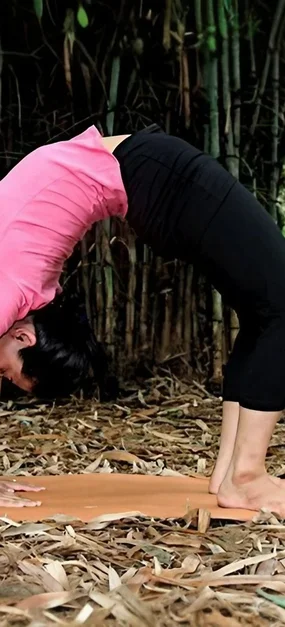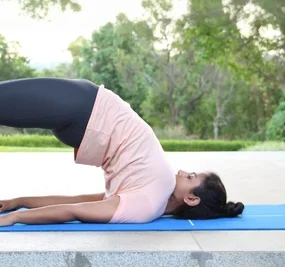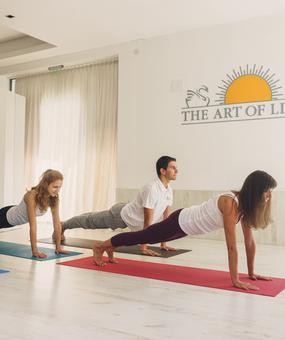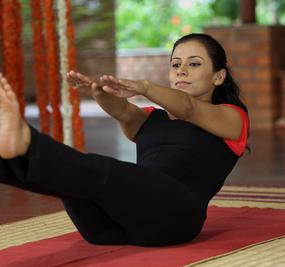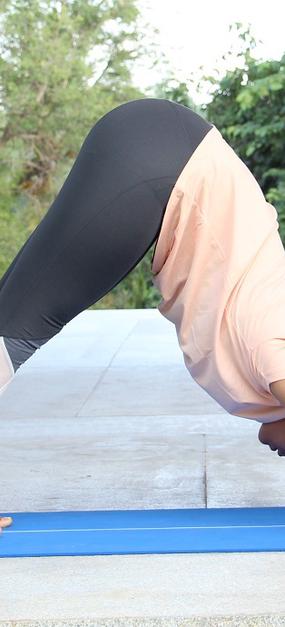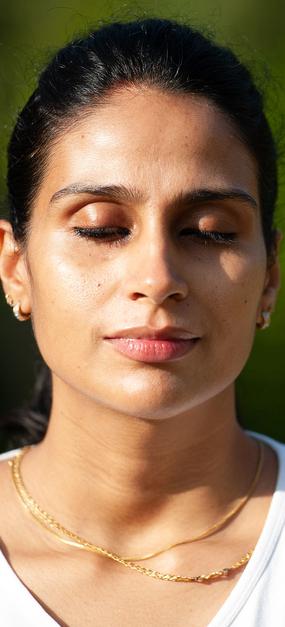Dhanurasana is pronounced as Dha-nur-aah-suh-na.
Dhanurasana – etymology
Dhanurasana has been named after the shape the body takes while performing it – that of a bow. Dhanu means bow and asana means posture or pose. Just as a well-strung bow is an asset to a warrior, a well-stretched body helps keep you flexible with a good posture.
The bow and Indian mythology
The bow has frequently been referenced in Indian mythology. In the Ramayana, Lord Rama broke Lord Shiva’s bow at princess Sita’s swayamvara to win her hand in marriage, a feat that no other prince could do, indicating his divinity. In the Mahabharata, some of the greatest duels involved the bow and arrow. Both prince Arujuna and his arch enemy Karna were adept at using the bow and arrow. However, Arjuna surpassed all others in archery with his determination and constant practice. It is this determination and consistency that you will explore within yourself as you smoothly move into Dhanurasana.
Prerequisites for Dhanurasana
When we do this pose at a specific time in an ideal physical state, it yields maximum benefits.
- Make sure you perform this asana 4-5 hours after having your main meal.
- It is best to do this pose in the morning. However, if for some reason, you are unable to do it then, include it in your evening practice.
- Ensure that you are suitably warmed up with the preparatory poses before you do Dhanurasana.
Preparatory poses
- Shalabhasana (Locust Posture)
- Bhujangasana (Cobra Stretch)
How to do Dhanurasana (Bow Pose)
- Lie on your stomach with your feet apart, in line with your hips, and your arms by the side of your body.
- Fold your knees, take your hands backward, and hold your ankles.
- Breathe in, and lift your chest off the ground and pull your legs up and towards the back.
- Look straight ahead with a smile on your face.
- Keep the pose stable while paying attention to your breath. Your body is now curved and as taut as a bow.
- Continue to take long, deep breaths as you relax in this pose. But, bend only as far as your body permits you to. Do not overdo the stretch.
- After 15 -20 seconds, as you exhale, gently bring your legs and chest to the ground. Release the ankles and relax.
Dhanurasana Video
Follow-up poses
- Ustrasana (Camel Pose)
- Chakrasana (Wheel Pose)
Tips for beginners
- Pay attention to your breath. Breathe in and breathe out when you go into and come out of the pose respectively.
- Bend as far back as possible. Do not hold the ankles if it is uncomfortable. You can also use a strap if you are unable to hold your ankles. In any asana, sthira and sukha are vital.
Benefits of Dhanurasana (Bow Pose)
- Strengthens the back and abdominal muscles
- Stimulates the reproductive organs
- Opens up the chest, neck, and shoulders
- Tones the leg and arm muscles
- Adds greater flexibility to the back
- Alleviates stress and fatigue
- Relieves menstrual discomfort and constipation
- Helps people with renal (kidney) disorders
Full body sequences like Padma Sadhana also include Dhanurasana (Bow Pose).
Contraindications of Dhanurasana (Bow Pose)
Ladies should avoid practicing this yoga pose during pregnancy. Also, do not practice Dhanurasana (Bow Pose) if you have
- High or low blood pressure
- Hernia
- Neck injury
- Pain in the lower back
- Headache or migraine
- Recent abdominal surgery
You can also explore more about Urdhva Dhanurasana or Chakrasana
Dhanurasana is one of those poses that becomes easier with time and practice. However, it is advisable to practice all yoga asanas under the guidance of a trained yoga teacher. Explore our yoga programs with the online Sri Sri Yoga program.
All Yoga Poses Previous yoga pose: Makara Adho Mukha Svanasana Next yoga pose: Bhujangasana


